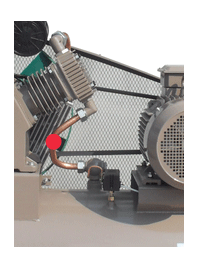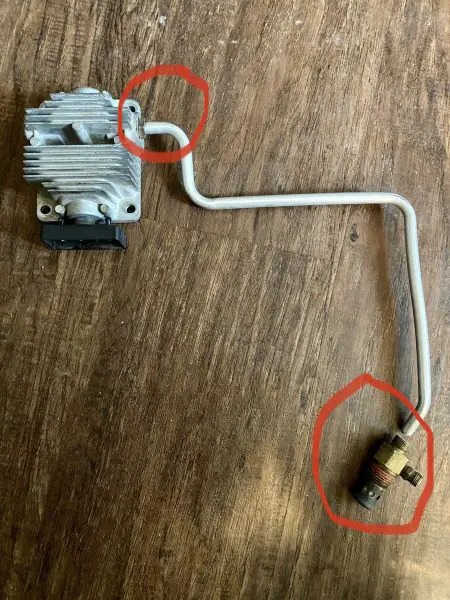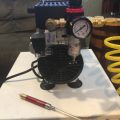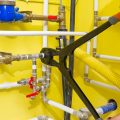On this compressor fittings page we are not talking about the discharge coupler, that device on the end of the plumbing from the tank into which the air hose coupler is connected. We will focus on the rest of the fittings that may be found on the typical DIY type air compressor. Information on the couplers and connectors can be found on this site right here.
Compressor Pump to Compressor Tank fittings

When the air compressor is running compressed air has to get from the pump head to the tank. The type of compressor being used may vary what the plumbing looks like, but eventually, the air gets to the tank from the pump.
At the pump head there will be a port into which the line will be plumbed. At tank there will be another fitting into which the line from the pump head is fitted to allow air to flow into the tank.
This is a high pressure fitting and the line from it to the tank will also be capable of handling high pressure. What’s high pressure? In the case of the air compressor, depending on the make, that could be 150 -175 PSI or even higher on some makes.
Are the fittings NPT or Metric?
These days, with so many compressors coming in from off shore, it’s hard to determine what fitting size will be on a specific compressor. Let’s make it easier if we can.
If you wish to have a lot of info about metric fitting and thread sizes this is a good link. (Opens another tab to another site.)
More detail about NPT fittings can be found here. (Link opens another tab to a new site.)
The first step is to use the information on the pages linked above to identify just what size your fitting is.
What style of fitting is it?
The fittings in the photo above could be compression style fittings or flared fittings. This means that the copper tube inside the nut on either end could either slide into the fitting and have a collet on it that helps form the seal, or a flare on the end of it might sit on the fitting and be forced against the fitting to achieve a seal.
What’s a collet? It’s a ring or sleeve around the tube that’s compressed when the nut on the tubing is tightened.
Neither of these types of fittings are hard to find… but, finding the right one for the compressor may be problematical. You may have to visit an industrial fastening house, of which there are many, to find the duplicate fitting.
Why is metal used on the pump to tank air line?
Compressing air causes heat buildup. A compressor pump that’s been running for a while could build up enough heat to melt a plastic air.
The output from a pump head can be at the pressure the compressor is rated for, therefore, if the compressor has a 150 PSI output level, the line must also be rated for that. Typically the plumbing lines are rated for much higher than the out put pressure they are expected to handle, as things could occur on a compressor where the output could rise substantially. Metal is the best choice.
Copper or another metal that doesn’t rust is also first choice. Compressed air usually contains lots of moisture, and that moisture, coupled with any compressor oils in the air, might be detrimental to other materials and cause weakness.
What’s the fitting at the tank?

In the photo just above the fitting on the right is the tank fitting.
Often the line from the pump to the tank terminates at the tank into a combination fitting that has a check valve in it, and often another port to allow air flow to be plumbed to the unloader valve on the compressor.
These types of fittings are common, it isn’t necessary to one of the same brand as the compressor, and once the existing fitting is determined to be metric for NPT a simple Google search for “metric tank check valves” or “NPT tank check valves” should return a significant number of sources.
Questions for comments? Please add them below.





